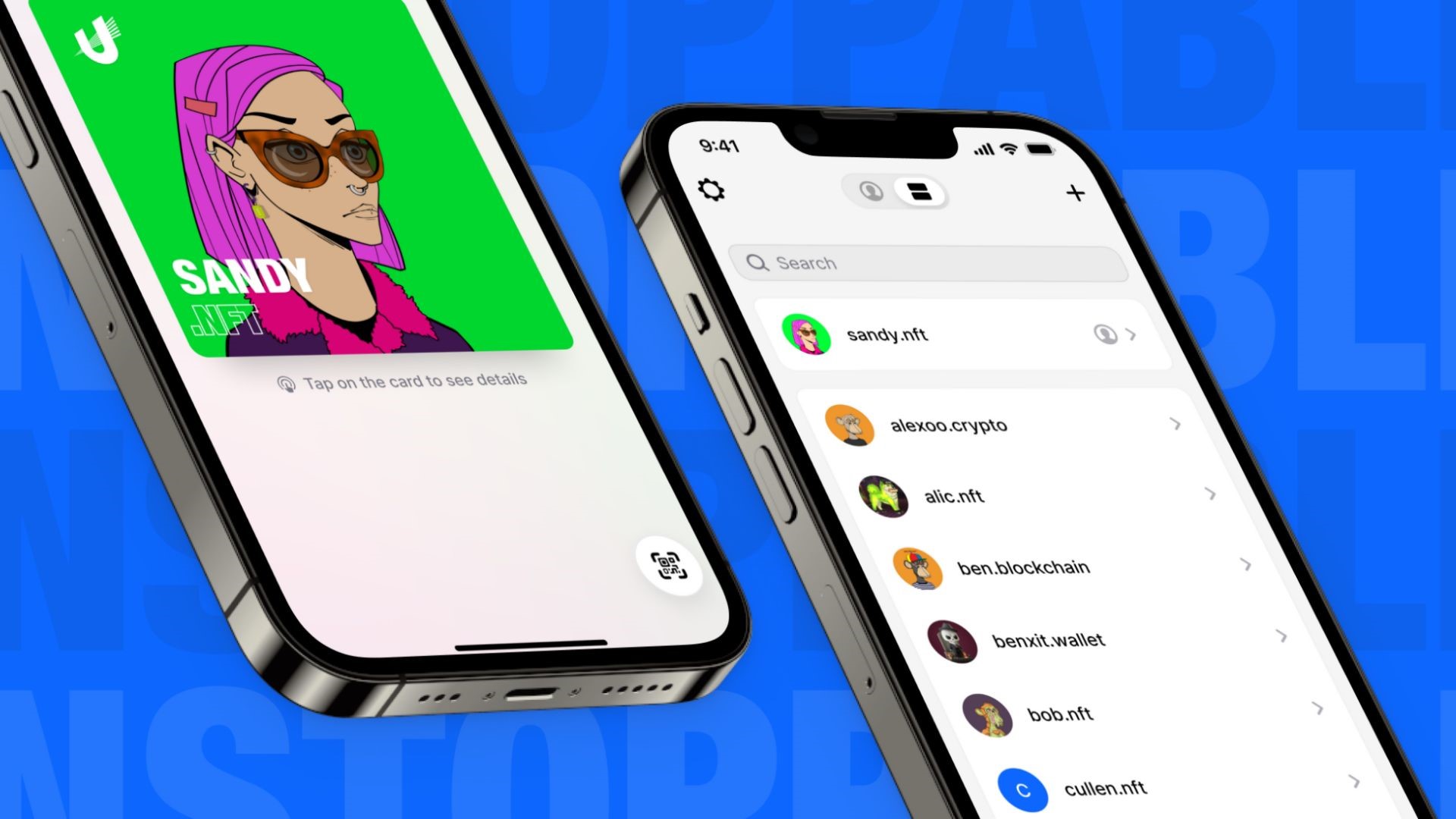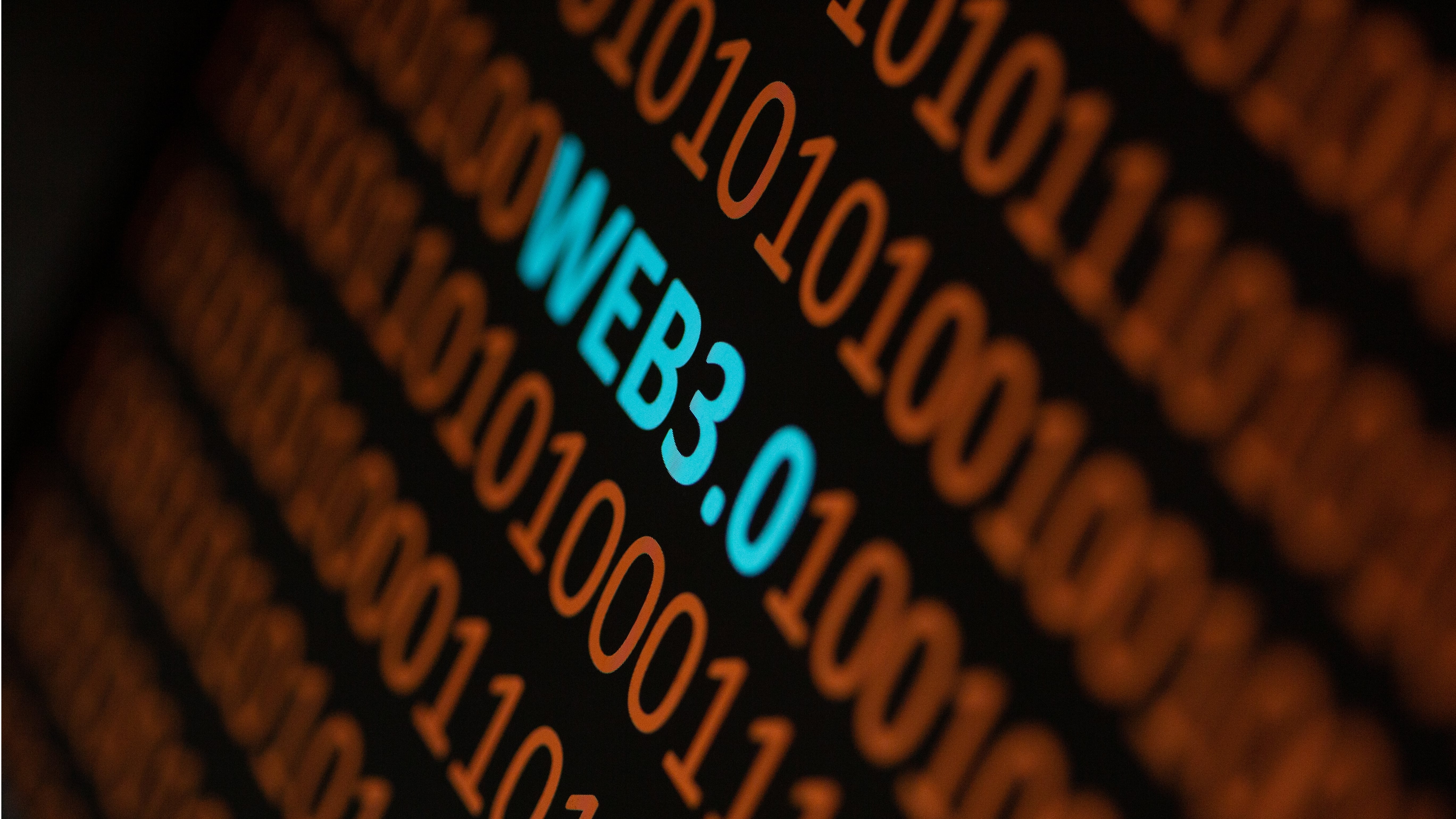10 ways Web3 domains will change the way we surf the web
Web3 domains are booming right now as monthly registrations increase

The rise of blockchain technology has introduced new ways that decentralization can overhaul traditional systems. First it was cryptocurrencies, and then Non-Fungible Tokens, or NFTs. Now, a new type of NFT is emerging, known as a “Web3 domain”.
Web3 domains are basically a complete tokenized infrastructure for a variety of data types to be held under a single asset that can be owned by an individual or company.
This opens up an array of possibilities that can completely revolutionize how interactions occur in the metaverse and the real, everyday world. Here are just ten unique use cases that decentralized domains can bring to people worldwide.
1. Creating a human readable payment address
One of the most immediate benefits of a Web3 domain is that it replaces traditional blockchain addresses, like “0x01fj489dB9i7…” with ones that are human readable and easy to remember, like “susan.wallet”. This brings decentralized payments in line with the type of user experience that people are already used to.
This step will be essential to making digitally native payments adopted by a more mainstream audience. One of the biggest hurdles keeping many out of cryptocurrency and DeFi is that it is inherently a bit technical to use, and mistakes are easy to make.
Offering something no more complex than a traditional web address will make the decentralized world more accessible to all.
2. Building your digital identity
The next use case on this list is implementing a user-owned, verifiable digital identity that can follow an individual across the entirety of the internet. A decentralized domain can be linked to anyone’s personal information, past credentials, achievements, social interactions and more. Since the individual owns the domain completely, they can provide this as proof of who they are.
Are you a pro? Subscribe to our newsletter
Sign up to the TechRadar Pro newsletter to get all the top news, opinion, features and guidance your business needs to succeed!
Unlike in Web2, with Web3 domains, the user controls what others can see. For example, as this technology matures, you could envision giving a lender with cryptographic proof that they possess a minimum amount of funds to qualify for a loan, without actually having to expose their net value. Alternatively, attaching employment and qualification data to a Web3 domain would make it possible to prove that someone previously held a certain job, was part of a given community, or passed various qualifying tests, all without having to share their entire history or even their name, if not applicable.
All of this comes as a major improvement. Today, every major service provider has their users create a unique profile, complete with different usernames and passwords. This means people have to keep track of a variety of login credentials as more and more services pop up all the time. They also have to “start fresh” with their reputation on each platform, as they generally don’t carry over any history or credentials. Being well-known on Instagram has no inherent merit when signing up to Twitter.
In addition, for years now, big tech companies have harvested and made billions on personal data. Web3 domains have the power to cut out the “middleman” – people own their data, and they can decide whether to provide it to the platforms they use. They could even monetize their own data, if they so choose.

3. Sending encrypted and private emails
Another benefit of Web3 domains is that they can provide an effective way to send and receive emails privately, and even encrypted email. By linking your Web3 domain to a private email client, it’s possible to add an additional layer of security to your existing Gmail or Outlook address, where new emails are forwarded through the private email client that is linked to your domain and into your personal inbox.
This makes it easier to block spam emails, send and receive encrypted emails and ensure privacy across your personal email account. Also, your personal email will remain hidden and only your Web3 domain email will be visible – ensuring that your personal email isn’t compromised.
While there are already email encryption services available, this method doesn’t require trusting any third party entities or code. Users remain in control at all times, while gaining a level of security not available through many other means.
4. For education credentials
Then there are the ways that verifiable credentials can help in the field of education, as well as job placement. Already, so much of the educational system is based on tracking student progress. Domain IDs simply streamline the process and make it unfalsifiable. Grades, extracurricular activities, awards and much more can all be recorded as they are achieved, and stay with that individual forever. Updates to the data could be automatic, so students don’t need to build out a list of proven documentation in anticipation of college or other higher learning.
Universities could similarly trust that the transcripts of a given applicant were 100% authentic, without the need for complex fact-checking. Candidates' profiles could even be organized by an algorithm in seconds to rank for eligibility, while allowing for final decision making to still be handled by a human.
Entering into the working world, a Web3 domain would allow employers to quickly parse through eligible hires, and have faith that their new employees hold the skills they claim to. Ease and confidence can be bolstered at every step of the process, meaning both the act of education and the results should work better for everyone.
5. A digital business card
While the case has been made for this technology as a personal ID, it could also be a professional one. The same domain that acts privately to prove who user’s are, can also serve as a business avatar, much in the way a business card reveals essential information, and nothing more.
Potential employers or partners could get the basics of what someone can offer, their relevant work history and contact info, but wouldn’t be able to learn more unless permission was granted by the holder. Additionally, thanks to the built in veracity, these would be far more trustworthy than anything printed on a physical card.
6. To prove you are a human being
Tied to digital IDs is the ability for these domains to contain verification of a “humanity check.” Basically, various biometrics like fingerprints, face scans, voice recognition and more can be leveraged to prove someone is an actual human being, without them having to reveal anything to a third party.
The verification would only need to happen once, and from then on a cryptographic, unfalsifiable proof would serve to validate that any user online was in fact human.
This can be a major weapon in the ongoing battle against bots, which currently run rampant across almost every corner of the internet. Bots have a major impact on social media, market prices, even news dissemination.
With humanity checks tied to domains as credentials, platforms will be able to easily eliminate bots and people will have more information about who they’re engaging with online.

7. A Defi/Metaverse login
Thanks to the various benefits that come with acting as an ID, this technology can also act as a single login credential for all of the services now available and emerging in both Decentralized Finance (DeFi) and the rest of the metaverse. Other decentralized offerings, like blockchain gaming, will still require players to have an account. Now, the domain token is the account, and simply holding it in their wallet will automatically grant players access, without them ever needing to type in anything.
The domain is like a touchless key for the Web3 age. Again, the user could customize how much each platform can see about them at any given time, but they could also seamlessly prove that they have access to a specific account or portfolio. This is likely to become the standard in the metaverse, leading to a much more efficient user experience.
8. Building a decentralized website
In addition to payment and email, Web3 domains give people a way to build a website on the decentralized web. Decentralized websites allow people to fully own and control their data, and give people an alternative to renting Web2 domains.
This use case for decentralized domains really can change the way users engage with the internet, and in just a few years visiting websites could become a much safer and transparent experience.
9. As collectibles
Because these domains are still NFTs, they can also be traded freely. Now, most individuals wouldn't do that for a token representing their personal info – keep in mind these assets aren’t only linked to a person, business or brand. They can represent anything, and be linked, or delinked, together.
People could even build value on top of a Web3 domain, then sell it on the open market. For example, an avid gamer could put 500 hours into their account, but is ready to move on.
They can simply trade their Web3 domain, unlinking it from themselves and relinking to another domain, in exchange for currency. Personal info is never exposed, and both parties can have full trust in the transaction.
The buyer should be able to see the proof that the account is what it claims, and because payment and delivery are inextricably linked, neither counterparty can scam or be scammed.
10. For brand recognition
Extending the notion of provable identity and reputation to branding, decentralized domains could be great for bringing recognition to celebrities, major businesses and other brand franchises.
Any business or personality could own a domain token attached to not only all of their history, but presumably links to domains of partners, employees and customers. All of this info would be now tied to their brand in a way that would be clear and easy to unpack.
An artist could have links to all of their auctioned pieces embedded in this ID, so that anyone who looks at their profile can easily see what they have sold and what is available. Alternatively, major chains could keep tabs on their customers, even across multiple locations, and offer them suggestions based on their past purchases.
Final thought
Even with all the possibilities covered here, there is likely so much more that developers will come up with in the coming years. The true power of Web3 domains lies in their veracity, privacy and user control.
Any type of data that can be encoded into these assets can be confirmed without being revealed, and it stands to change the landscape of both digital and physical interactions.
Personal freedom as well as business confidence can be elevated, and the future of commerce will become much more efficient, thanks to the adoption of Web3 domains.
- Check out our list of the best domain registrars on the market
Sandy Carter is Senior Vice President and Channel Chief at Unstoppable Domains, an Web3 domain name provider working to onboard the world onto Web3.